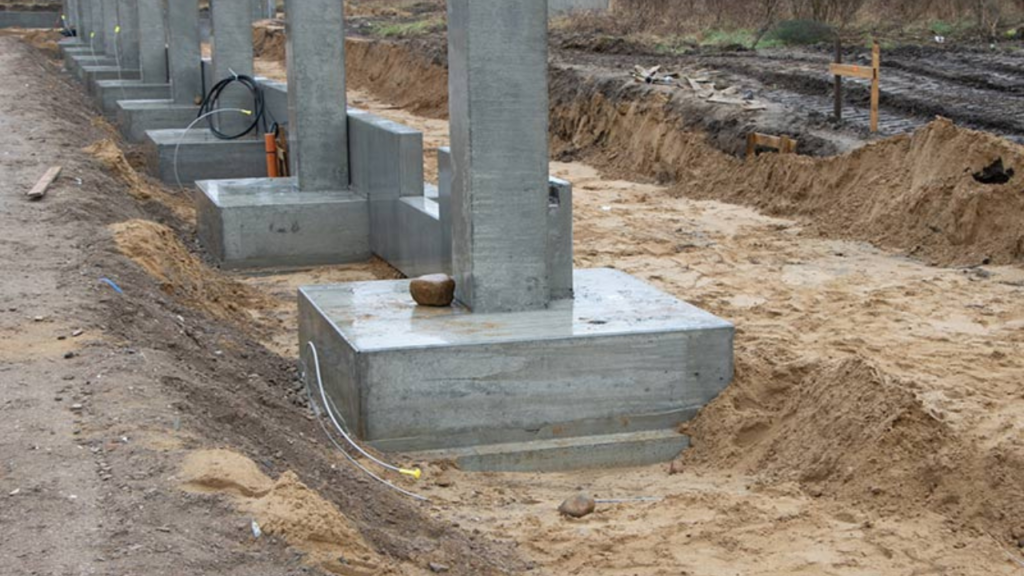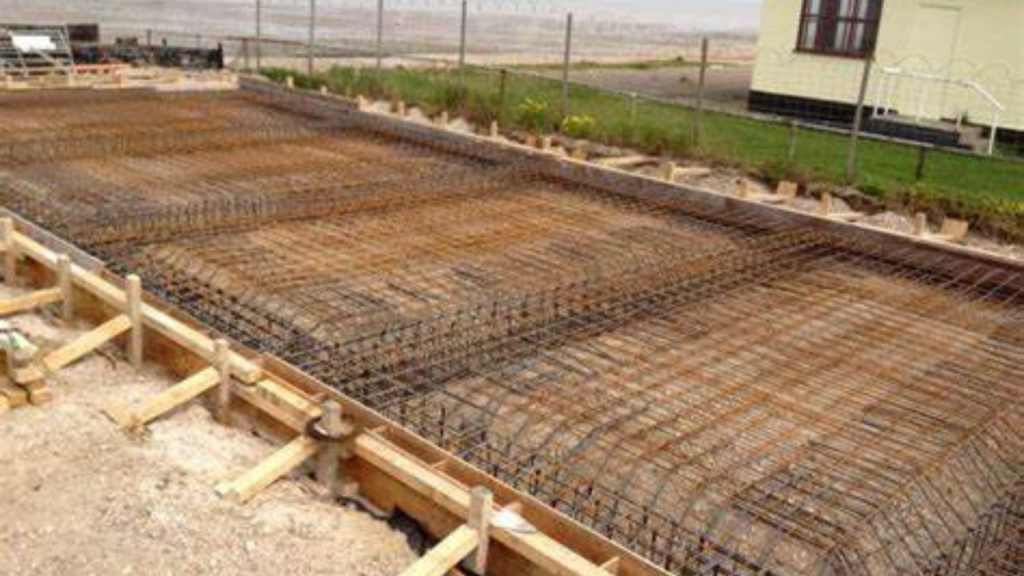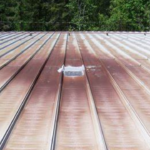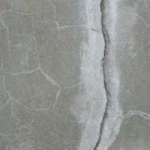Choosing the right foundation is one of the most important decisions when building a house or structure in Nigeria.
Two of the most common shallow foundation types are pad foundation and raft foundation.
While they may seem similar in purpose to support the building they are quite different in design, use, and suitability.
In this article, Bullionrise consult will explain the key differences between pad and raft foundations, when to use each one, and their pros and cons to help you make the right choice for your building project.
Table of Contents
ToggleSee also – Strip foundation explained to common man
What Is a Pad Foundation?

A pad foundation is a type of shallow foundation that consists of individual concrete blocks (pads) placed under structural columns.
Each pad transfers the load of a single column directly to the ground beneath it.
It is commonly used in buildings where loads are concentrated on certain points like bungalows, duplexes, or small commercial structures and where the soil is firm and stable.
Features of Pad Foundation:
- Made of concrete (plain or reinforced)
- Square or rectangular in shape
- Supports individual columns
- Best on strong, firm soils
See also – pad foundations explained | pros and cons
What Is a Raft Foundation?

A raft foundation, also known as a mat foundation, is a large concrete slab that covers the entire footprint of the building and supports all walls and columns together.
It spreads the building’s load evenly across the entire base.
Raft foundations are used in areas with weak, clayey, or waterlogged soils where individual footings might fail.
Features of Raft Foundation:
- Large concrete slab (often reinforced)
- Covers the whole building area
- Distributes load across entire structure
- Ideal for weak or unstable soil
Key Differences Between Pad and Raft Foundations
Definition:
- Pad Foundation: A shallow foundation designed to support individual columns or concentrated loads. It consists of isolated concrete pads placed beneath each load-bearing point.
- Raft Foundation: A large, continuous slab of concrete that supports the entire structure by distributing the load evenly across a wide area.
Load Distribution:
- Pad Foundation: Transfers loads from individual columns directly to the soil beneath each pad.
- Raft Foundation: Spreads the load of the entire structure across the slab, reducing stress on the soil.
Suitability:
- Pad Foundation: Ideal for small structures or buildings with isolated columns and strong soil conditions.
- Raft Foundation: Suitable for large or heavy structures, especially in areas with weak or uneven soil.
Construction Complexity:
- Pad Foundation: Easier and quicker to construct, requiring less excavation and material.
- Raft Foundation: More complex and time-consuming, involving extensive excavation and reinforcement.
Cost:
- Pad Foundation: Generally more cost-effective for small-scale projects.
- Raft Foundation: More expensive due to the larger volume of concrete and reinforcement required.
Resistance to Settlement:
- Pad Foundation: May be prone to differential settlement if the soil is uneven.
- Raft Foundation: Minimizes differential settlement by distributing the load evenly.
See also – How do you solve foundation problems to avoid building collapse?
When to Use Pad Foundation
- The building is small to medium-sized
- The structure is supported by columns
- The soil is firm, like laterite or compacted red earth
- You’re looking for a budget-friendly foundation
When to Use Raft Foundation
- The soil is weak, clayey, swampy, or waterlogged
- The building is heavy or multi-storey
- You need to avoid uneven settlement
- You’re building with basements or underground tanks
Pros and Cons at a Glance
Pad Foundation
Pros:
- Cost-effective
- Easy to construct
- Suitable for most residential buildings on good soil
Cons:
- Not suitable for weak soils
- Can suffer from uneven settlement
- Limited to light to moderate loads
Raft Foundation
Pros:
- Good for poor soil conditions
- Handles heavy structural loads well
- Reduces risk of differential settlement
Cons:
- More expensive
- Requires more materials and labor
- Needs professional design and supervision
See related – What is the best way to stabilize the ground for foundation
Conclusion
Both pad foundations and raft foundations serve essential roles in Nigerian construction.
The choice between them depends on soil condition, building type, load requirements, and your budget.
- If you’re building a small home on firm soil, a pad foundation may be your best and most affordable option.
- If your site has poor soil or you’re building a large structure, a raft foundation offers better strength and stability.
Before making a decision, always carry out a soil test and consult a qualified structural engineer to recommend the most suitable foundation for your site.
Frequently asked questions
What is a pad foundation, and what is a raft foundation?
A pad foundation is an isolated, shallow foundation that supports individual columns or concentrated loads.
It consists of separate concrete pads placed directly under each load-bearing point.
A raft foundation, on the other hand, is a large, continuous slab of concrete that spans across the building’s entire footprint, distributing the load of the structure evenly across a wide area.
How do pad and raft foundations differ in terms of load distribution?
Pad foundations transfer loads from individual columns or concentrated points directly to the soil below each pad.
Raft foundations spread the entire building’s load across a single large slab, minimizing stress and uneven settlement issues.
This makes raft foundations ideal for heavy structures.
Which soil conditions are suitable for pad foundations, and which are suitable for raft foundations?
Pad foundations are suitable for soil with high bearing capacity, such as compacted sand, gravel, or stable clay.
They work best when the loads are not too heavy.
Raft foundations are ideal for weaker or uneven soil conditions that may not support traditional isolated foundations.
They distribute the load across the slab to prevent settlement problems.
When should a pad foundation be used instead of a raft foundation?
Pad foundations are better suited for smaller structures or projects with isolated loads like individual columns, and where the soil is stable and strong.
They are also cost-effective for lightweight buildings.
Raft foundations are preferred for larger or heavier buildings, especially in areas with challenging or unstable soil conditions.
Which type of foundation is more cost-effective: pad or raft?
Pad foundations are typically more cost-effective for smaller-scale projects, requiring less concrete and reinforcement.
Raft foundations involve higher costs due to the large volume of materials required, but they are a better long-term investment for large structures and poor soil conditions.












